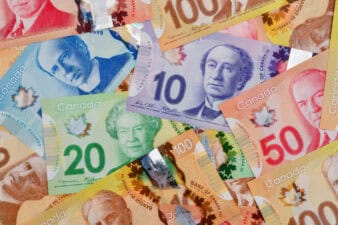A common asset allocation strategy is a balanced one that places 50% in stocks and 50% in bonds. That has delivered long-term annualized returns of about 8.2%, according to Vanguard.
The idea is that such a portfolio will have reduced volatility (a form of risk) compared to a 100% stock portfolio that maximizes long-term growth. Historically, a portfolio built entirely of stocks has delivered long-term returns of about 10.1% per year.
Unfortunately, today’s historically low interest rate environment might not suit your income needs anymore. For investment portfolios that have a big allocation to bonds, they would have seen their interest income fall dramatically over the years. As a result, investors might have to increase their stock allocation to replace the lost income.
If that’s what you’re doing, it doesn’t necessarily mean you’ll be taking on excessive risk. The real risk in investing is not volatility but rather permanent loss of investment capital. Alternatively, it could be that you’re not investing in the best investments possible for the greatest returns.
Buying stocks for income
If you seek income over growth, you can invest in high-income stocks through exchange-traded funds (ETFs). In Canada, utility, REIT, and financials ETFs could make sense. They offer yields of about 3.4%, 6.2%, 3.6%, respectively.
You can even get higher income (and dividend growth) if you have the interest to build your own dividend stock portfolio. However, it’ll require more work on your part to learn what makes a good business and investment. A business that’s doing well could be a bad investment if the stock is overpriced.
Moreover, you’ll get a different opinion if you ask different people which big Canadian bank is the best buy now. Some would prefer the biggest Royal Bank of Canada that has a diversified business mix. It offers a nice yield of 4.5%. Others would stay away from the banks today, noting the bad economic condition due to COVID-19 disruptions. I’m of the camp that believes the big banks are discounted for long-term investment.
By investing in stocks one by one, you can build the highest-quality income portfolio.
Buying stocks for growth
Growth portfolios have historically outperformed income-focused portfolios. However, investors will need to be able to sit on their hands after buying the right stocks.
For instance, since 2010, Amazon stock has been a 22-bagger, delivering annualized returns of more than 34% per year. It’s impossible to find an income-focused stock that would beat its returns.
Shopify stock is a Canadian success story. With its innovation, it has been taking a ride on the e-commerce trend. The growth stock has been a 38-bagger since it was listed on the TSX in 2015, delivering returns of more than 103% per year.
Therefore, long-term investors should highly consider allocating a meaningful portion of their portfolios, not only to stocks but to growth stocks.
The Foolish takeaway
By allocating too much to bonds, investors may not be generating the income they need. For more income, consider high-income ETFs or dividend stocks that offer above-average income. Additionally, you can generate extraordinary wealth by investing in high-growth stocks.
You should therefore consider allocating some of your capital to stocks like Amazon and Shopify.
 Don't Miss AI's Third Wave
Don't Miss AI's Third Wave







